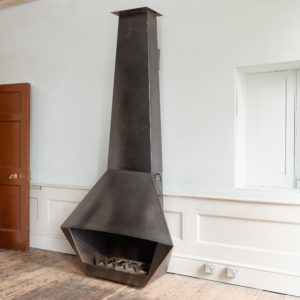79 items found
Page 1 of 1
-
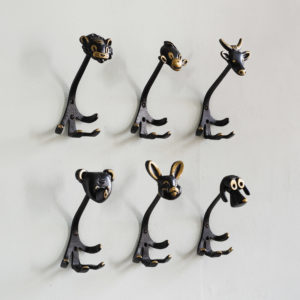
Set of Walter Bosse coat hooks
£1,500 the set -
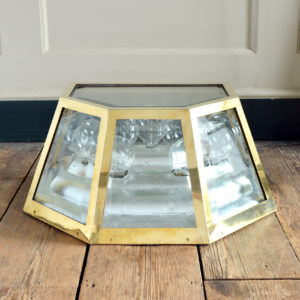
Pair of 1970s polished bronze and silver leaf uplighters,
£1,200 the pair -
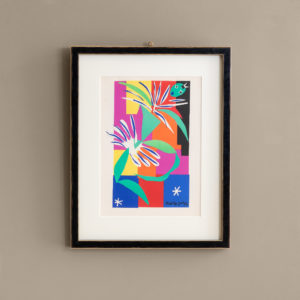
Henri Matisse, ‘The Last Works of Henri Matisse’
£900 eachHenri Matisse, ‘The Last Works of Henri Matisse’
From Verve Vol. IX No. 35/36 published by Tériade under the title 'The Last Works of Henri Matisse'£900 each -
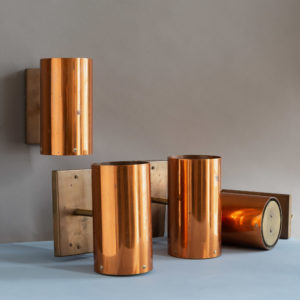
Copper and brass wall lights,
£850 a pairCopper and brass wall lights,
thick gauge lacquered copper rotating cylinders with brass wall plates, sold in pairs, two pairs available, re-wired and PAT tested.£850 a pair -

An oil on board landscape by Fyffe Christie,
£675An oil on board landscape by Fyffe Christie,
The depiction of rolling fields and animated sky realised in scrapes, dabs and flourishes of the palette knife, presented in a painted pine frame with gilt slip, signed bottom right,£675 -
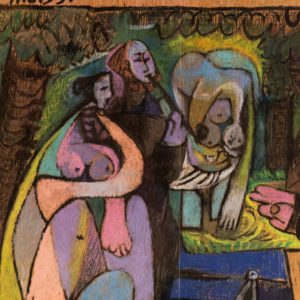
Pablo Picasso, Lithograph based on Edouard Manet’s, Luncheon on the the Grass. c1962
£550Pablo Picasso, Lithograph based on Edouard Manet’s, Luncheon on the the Grass. c1962
From 1959-1962 Pablo Picasso and his second wife Jacqueline lived at Château de Vauvenargues near Aix-en-Provence. He spent most of his time of his time on 140 drawings and 27 paintings, lino-cuts and cardboard models all on the theme of Manet’s, Le Déjeuner sur l’herbe. Manet's original painting from 1862 showing a nude woman sitting between two fully clothed men was a scandal for the time.£550 -
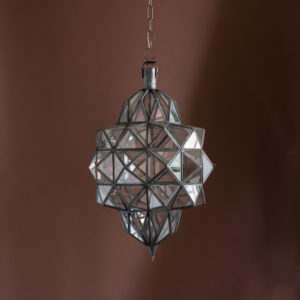
Large Rombus shaped pendant light.
£450Large Rombus shaped pendant light.
This beautifully crafted lantern, probably made in Morocco. With each of the metal and glass cell being joined to create a very pleasing geometric shape.£450 -
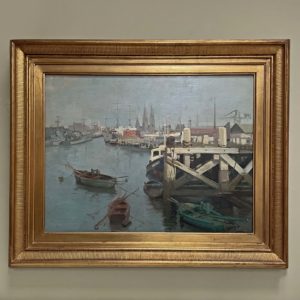
‘Ostende’, a framed oil on artist’s board,
£420‘Ostende’, a framed oil on artist’s board,
depicting the port of Ostend, in moulded gilt composition frame; signed, titled and dated to the front and reverse,£420 -
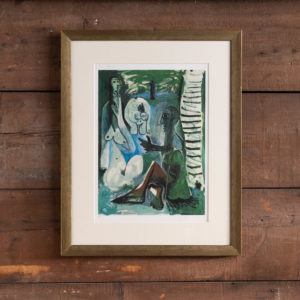
Pablo Picasso, Lithograph of a Study for the Reworking of Edouard Manet’s, Luncheon on the the Grass. c1962
£350Pablo Picasso, Lithograph of a Study for the Reworking of Edouard Manet’s, Luncheon on the the Grass. c1962
From 1959-1962 Pablo Picasso and his second wife Jacqueline lived at Château de Vauvenargues near Aix-en-Provence. He spent most of his time of his time on 140 drawings and 27 paintings, lino-cuts and cardboard models all on the theme of Manet’s, Le Déjeuner sur l’herbe. Manet's original painting from 1862 showing a nude woman sitting between two fully clothed men was a scandal for the time.£350 -
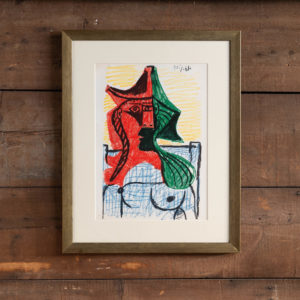
Pablo Picasso, Lithograph of a Bather Study of Edouard Manet’s, Luncheon on the the Grass. c1962
£350Pablo Picasso, Lithograph of a Bather Study of Edouard Manet’s, Luncheon on the the Grass. c1962
From 1959-1962 Pablo Picasso and his second wife Jacqueline lived at Château de Vauvenargues near Aix-en-Provence. He spent most of his time of his time on 140 drawings and 27 paintings, lino-cuts and cardboard models all on the theme of Manet’s, Le Déjeuner sur l’herbe. Manet's original painting from 1862 showing a nude woman sitting between two fully clothed men was a scandal for the time.£350 -
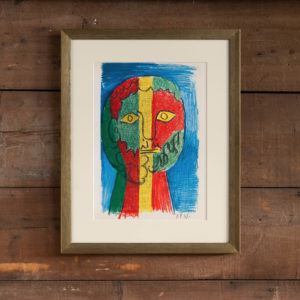
Pablo Picasso, Lithograph of a Head Study of Edouard Manet’s, Luncheon on the the Grass. c1962
£350Pablo Picasso, Lithograph of a Head Study of Edouard Manet’s, Luncheon on the the Grass. c1962
From 1959-1962 Pablo Picasso and his second wife Jacqueline lived at Château de Vauvenargues near Aix-en-Provence. He spent most of his time of his time on 140 drawings and 27 paintings, lino-cuts and cardboard models all on the theme of Manet’s, Le Déjeuner sur l’herbe. Manet's original painting from 1862 showing a nude woman sitting between two fully clothed men was a scandal for the time.£350 -
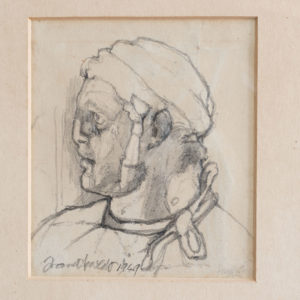
Man with Turban by Francis Hewitt
£300Man with Turban by Francis Hewitt
Pencil sketch signed and dated 49. In plain wood frame, floated within a cream mount.£300 -
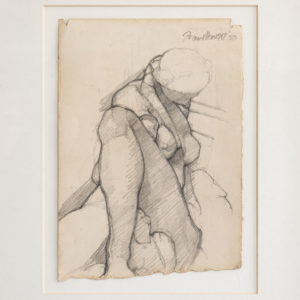
Nude Study by Francis Hewitt
£300Nude Study by Francis Hewitt
Pencil sketch signed and dated 50. In plain wood frame, floated within a cream mount.£300 -
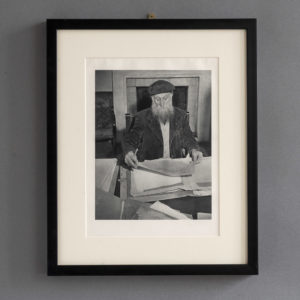
Photographs from Verve, December 1937. Portrait of Aristide Maillol
£250 eachPhotographs from Verve, December 1937. Portrait of Aristide Maillol
The Verve Review, from its very inception, was a purposefully luxurious art publication. It ran from 1937 to 1960, but for only 38 editions, due to the high degree of design and editorial work dedicated to each issue. Its editor was Stratis Eleftheriades, a Greek National who moved to Paris in the early thirties to take part in the growing Modernist movement, writing under the name of Teriade. As an art critic, patron and gallery owner he commissioned various individuals, artists, photographers and philosophers to contribute to it. Héliogravure is a process for printing photographs that was developed in the first half of the 19th century. It is a photo-mechanical process whereby a copper plate is grained and then coated with a light-sensitive gelatin tissue which had been exposed to a film positive, and then etched, resulting in a high-quality intaglio plate that can reproduce detailed continuous tones of a photograph.£250 each -
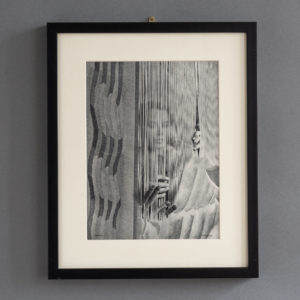
Photographs from Verve, December 1937. Gobelins / Makowska
£250 eachPhotographs from Verve, December 1937. Gobelins / Makowska
The Verve Review, from its very inception, was a purposefully luxurious art publication. It ran from 1937 to 1960, but for only 38 editions, due to the high degree of design and editorial work dedicated to each issue. Its editor was Stratis Eleftheriades, a Greek National who moved to Paris in the early thirties to take part in the growing Modernist movement, writing under the name of Teriade. As an art critic, patron and gallery owner he commissioned various individuals, artists, photographers and philosophers to contribute to it. Héliogravure is a process for printing photographs that was developed in the first half of the 19th century. It is a photo-mechanical process whereby a copper plate is grained and then coated with a light-sensitive gelatin tissue which had been exposed to a film positive, and then etched, resulting in a high-quality intaglio plate that can reproduce detailed continuous tones of a photograph.£250 each -
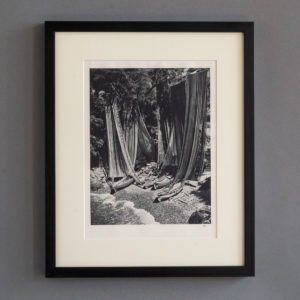
Photographs from Verve, December 1937. Gil
£250 eachPhotographs from Verve, December 1937. Gil
The Verve Review, from its very inception, was a purposefully luxurious art publication. It ran from 1937 to 1960, but for only 38 editions, due to the high degree of design and editorial work dedicated to each issue. Its editor was Stratis Eleftheriades, a Greek National who moved to Paris in the early thirties to take part in the growing Modernist movement, writing under the name of Teriade. As an art critic, patron and gallery owner he commissioned various individuals, artists, photographers and philosophers to contribute to it. Héliogravure is a process for printing photographs that was developed in the first half of the 19th century. It is a photo-mechanical process whereby a copper plate is grained and then coated with a light-sensitive gelatin tissue which had been exposed to a film positive, and then etched, resulting in a high-quality intaglio plate that can reproduce detailed continuous tones of a photograph.£250 each -
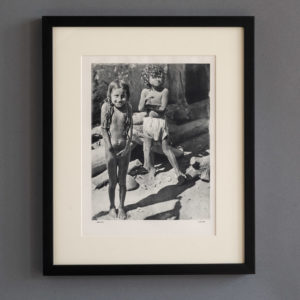
Photographs from Verve, December 1937. Henri Cartier-Bresson
£250 eachPhotographs from Verve, December 1937. Henri Cartier-Bresson
The Verve Review, from its very inception, was a purposefully luxurious art publication. It ran from 1937 to 1960, but for only 38 editions, due to the high degree of design and editorial work dedicated to each issue. Its editor was Stratis Eleftheriades, a Greek National who moved to Paris in the early thirties to take part in the growing Modernist movement, writing under the name of Teriade. As an art critic, patron and gallery owner he commissioned various individuals, artists, photographers and philosophers to contribute to it. Héliogravure is a process for printing photographs that was developed in the first half of the 19th century. It is a photo-mechanical process whereby a copper plate is grained and then coated with a light-sensitive gelatin tissue which had been exposed to a film positive, and then etched, resulting in a high-quality intaglio plate that can reproduce detailed continuous tones of a photograph.£250 each -
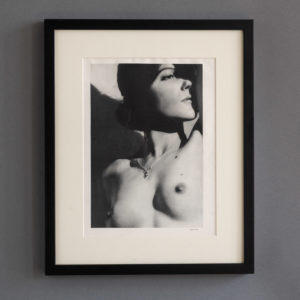
Photographs from Verve, December 1937. Man Ray
£250 eachPhotographs from Verve, December 1937. Man Ray
The Verve Review, from its very inception, was a purposefully luxurious art publication. It ran from 1937 to 1960, but for only 38 editions, due to the high degree of design and editorial work dedicated to each issue. Its editor was Stratis Eleftheriades, a Greek National who moved to Paris in the early thirties to take part in the growing Modernist movement, writing under the name of Teriade. As an art critic, patron and gallery owner he commissioned various individuals, artists, photographers and philosophers to contribute to it. Héliogravure is a process for printing photographs that was developed in the first half of the 19th century. It is a photo-mechanical process whereby a copper plate is grained and then coated with a light-sensitive gelatin tissue which had been exposed to a film positive, and then etched, resulting in a high-quality intaglio plate that can reproduce detailed continuous tones of a photograph.£250 each -
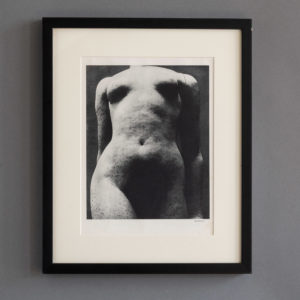
Photographs from Verve, December 1937. Erwin Blumenfeld
£250 eachPhotographs from Verve, December 1937. Erwin Blumenfeld
The Verve Review, from its very inception, was a purposefully luxurious art publication. It ran from 1937 to 1960, but for only 38 editions, due to the high degree of design and editorial work dedicated to each issue. Its editor was Stratis Eleftheriades, a Greek National who moved to Paris in the early thirties to take part in the growing Modernist movement, writing under the name of Teriade. As an art critic, patron and gallery owner he commissioned various individuals, artists, photographers and philosophers to contribute to it. Héliogravure is a process for printing photographs that was developed in the first half of the 19th century. It is a photo-mechanical process whereby a copper plate is grained and then coated with a light-sensitive gelatin tissue which had been exposed to a film positive, and then etched, resulting in a high-quality intaglio plate that can reproduce detailed continuous tones of a photograph.£250 each -
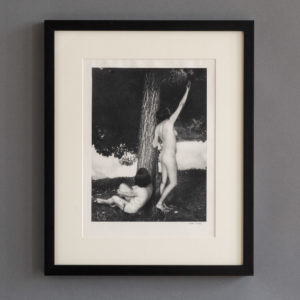
Photographs from Verve, December 1937. Nora Dumas
£250 eachPhotographs from Verve, December 1937. Nora Dumas
The Verve Review, from its very inception, was a purposefully luxurious art publication. It ran from 1937 to 1960, but for only 38 editions, due to the high degree of design and editorial work dedicated to each issue. Its editor was Stratis Eleftheriades, a Greek National who moved to Paris in the early thirties to take part in the growing Modernist movement, writing under the name of Teriade. As an art critic, patron and gallery owner he commissioned various individuals, artists, photographers and philosophers to contribute to it. Héliogravure is a process for printing photographs that was developed in the first half of the 19th century. It is a photo-mechanical process whereby a copper plate is grained and then coated with a light-sensitive gelatin tissue which had been exposed to a film positive, and then etched, resulting in a high-quality intaglio plate that can reproduce detailed continuous tones of a photograph.£250 each -
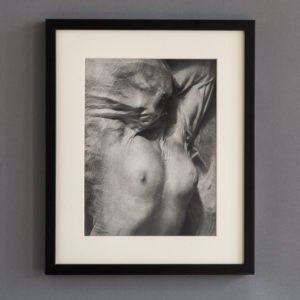
Photographs from Verve, December 1937. Erwin Blumenfeld
£250 eachPhotographs from Verve, December 1937. Erwin Blumenfeld
The Verve Review, from its very inception, was a purposefully luxurious art publication. It ran from 1937 to 1960, but for only 38 editions, due to the high degree of design and editorial work dedicated to each issue. Its editor was Stratis Eleftheriades, a Greek National who moved to Paris in the early thirties to take part in the growing Modernist movement, writing under the name of Teriade. As an art critic, patron and gallery owner he commissioned various individuals, artists, photographers and philosophers to contribute to it. Héliogravure is a process for printing photographs that was developed in the first half of the 19th century. It is a photo-mechanical process whereby a copper plate is grained and then coated with a light-sensitive gelatin tissue which had been exposed to a film positive, and then etched, resulting in a high-quality intaglio plate that can reproduce detailed continuous tones of a photograph.£250 each -
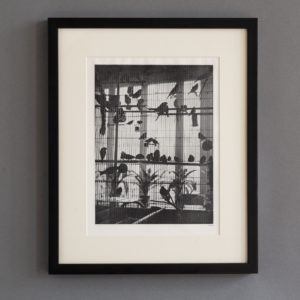
Photographs from Verve, December 1937. Brassaï
£250 eachPhotographs from Verve, December 1937. Brassaï
The Verve Review, from its very inception, was a purposefully luxurious art publication. It ran from 1937 to 1960, but for only 38 editions, due to the high degree of design and editorial work dedicated to each issue. Its editor was Stratis Eleftheriades, a Greek National who moved to Paris in the early thirties to take part in the growing Modernist movement, writing under the name of Teriade. As an art critic, patron and gallery owner he commissioned various individuals, artists, photographers and philosophers to contribute to it. Héliogravure is a process for printing photographs that was developed in the first half of the 19th century. It is a photo-mechanical process whereby a copper plate is grained and then coated with a light-sensitive gelatin tissue which had been exposed to a film positive, and then etched, resulting in a high-quality intaglio plate that can reproduce detailed continuous tones of a photograph.£250 each -
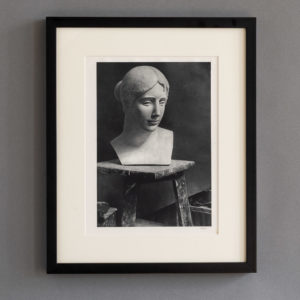
Photographs from Verve, December 1937. Brassaï
£250 eachPhotographs from Verve, December 1937. Brassaï
The Verve Review, from its very inception, was a purposefully luxurious art publication. It ran from 1937 to 1960, but for only 38 editions, due to the high degree of design and editorial work dedicated to each issue. Its editor was Stratis Eleftheriades, a Greek National who moved to Paris in the early thirties to take part in the growing Modernist movement, writing under the name of Teriade. As an art critic, patron and gallery owner he commissioned various individuals, artists, photographers and philosophers to contribute to it. Héliogravure is a process for printing photographs that was developed in the first half of the 19th century. It is a photo-mechanical process whereby a copper plate is grained and then coated with a light-sensitive gelatin tissue which had been exposed to a film positive, and then etched, resulting in a high-quality intaglio plate that can reproduce detailed continuous tones of a photograph.£250 each -
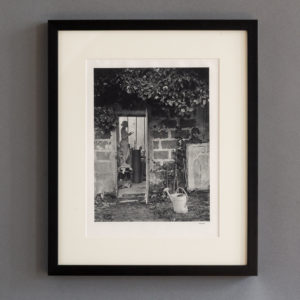
Photographs from Verve, December 1937. Brassaï
£250 eachPhotographs from Verve, December 1937. Brassaï
The Verve Review, from its very inception, was a purposefully luxurious art publication. It ran from 1937 to 1960, but for only 38 editions, due to the high degree of design and editorial work dedicated to each issue. Its editor was Stratis Eleftheriades, a Greek National who moved to Paris in the early thirties to take part in the growing Modernist movement, writing under the name of Teriade. As an art critic, patron and gallery owner he commissioned various individuals, artists, photographers and philosophers to contribute to it. Héliogravure is a process for printing photographs that was developed in the first half of the 19th century. It is a photo-mechanical process whereby a copper plate is grained and then coated with a light-sensitive gelatin tissue which had been exposed to a film positive, and then etched, resulting in a high-quality intaglio plate that can reproduce detailed continuous tones of a photograph.£250 each -
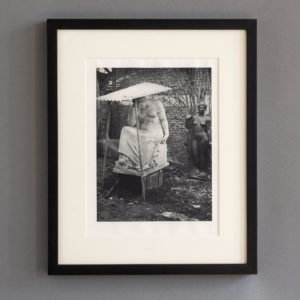
Photographs from Verve, December 1937. Brassaï
£250 eachPhotographs from Verve, December 1937. Brassaï
The Verve Review, from its very inception, was a purposefully luxurious art publication. It ran from 1937 to 1960, but for only 38 editions, due to the high degree of design and editorial work dedicated to each issue. Its editor was Stratis Eleftheriades, a Greek National who moved to Paris in the early thirties to take part in the growing Modernist movement, writing under the name of Teriade. As an art critic, patron and gallery owner he commissioned various individuals, artists, photographers and philosophers to contribute to it. Héliogravure is a process for printing photographs that was developed in the first half of the 19th century. It is a photo-mechanical process whereby a copper plate is grained and then coated with a light-sensitive gelatin tissue which had been exposed to a film positive, and then etched, resulting in a high-quality intaglio plate that can reproduce detailed continuous tones of a photograph.£250 each -
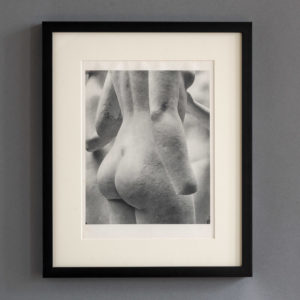
Photographs from Verve, December 1937. Brassaï
£250 eachPhotographs from Verve, December 1937. Brassaï
The Verve Review, from its very inception, was a purposefully luxurious art publication. It ran from 1937 to 1960, but for only 38 editions, due to the high degree of design and editorial work dedicated to each issue. Its editor was Stratis Eleftheriades, a Greek National who moved to Paris in the early thirties to take part in the growing Modernist movement, writing under the name of Teriade. As an art critic, patron and gallery owner he commissioned various individuals, artists, photographers and philosophers to contribute to it. Héliogravure is a process for printing photographs that was developed in the first half of the 19th century. It is a photo-mechanical process whereby a copper plate is grained and then coated with a light-sensitive gelatin tissue which had been exposed to a film positive, and then etched, resulting in a high-quality intaglio plate that can reproduce detailed continuous tones of a photograph.£250 each -

Photographs from Verve, December 1937. Brassaï
£250 eachPhotographs from Verve, December 1937. Brassaï
The Verve Review, from its very inception, was a purposefully luxurious art publication. It ran from 1937 to 1960, but for only 38 editions, due to the high degree of design and editorial work dedicated to each issue. Its editor was Stratis Eleftheriades, a Greek National who moved to Paris in the early thirties to take part in the growing Modernist movement, writing under the name of Teriade. As an art critic, patron and gallery owner he commissioned various individuals, artists, photographers and philosophers to contribute to it. Héliogravure is a process for printing photographs that was developed in the first half of the 19th century. It is a photo-mechanical process whereby a copper plate is grained and then coated with a light-sensitive gelatin tissue which had been exposed to a film positive, and then etched, resulting in a high-quality intaglio plate that can reproduce detailed continuous tones of a photograph.£250 each -
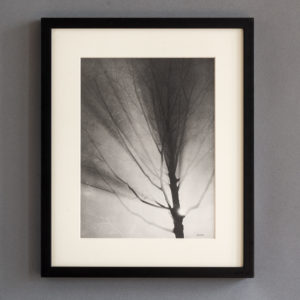
Photographs from Verve, December 1937. Brassaï
£250 eachPhotographs from Verve, December 1937. Brassaï
The Verve Review, from its very inception, was a purposefully luxurious art publication. It ran from 1937 to 1960, but for only 38 editions, due to the high degree of design and editorial work dedicated to each issue. Its editor was Stratis Eleftheriades, a Greek National who moved to Paris in the early thirties to take part in the growing Modernist movement, writing under the name of Teriade. As an art critic, patron and gallery owner he commissioned various individuals, artists, photographers and philosophers to contribute to it. Héliogravure is a process for printing photographs that was developed in the first half of the 19th century. It is a photo-mechanical process whereby a copper plate is grained and then coated with a light-sensitive gelatin tissue which had been exposed to a film positive, and then etched, resulting in a high-quality intaglio plate that can reproduce detailed continuous tones of a photograph.£250 each -
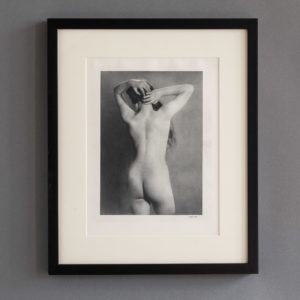
Photographs from Verve, December 1937. Man Ray
£250 eachPhotographs from Verve, December 1937. Man Ray
The Verve Review, from its very inception, was a purposefully luxurious art publication. It ran from 1937 to 1960, but for only 38 editions, due to the high degree of design and editorial work dedicated to each issue. Its editor was Stratis Eleftheriades, a Greek National who moved to Paris in the early thirties to take part in the growing Modernist movement, writing under the name of Teriade. As an art critic, patron and gallery owner he commissioned various individuals, artists, photographers and philosophers to contribute to it. Héliogravure is a process for printing photographs that was developed in the first half of the 19th century. It is a photo-mechanical process whereby a copper plate is grained and then coated with a light-sensitive gelatin tissue which had been exposed to a film positive, and then etched, resulting in a high-quality intaglio plate that can reproduce detailed continuous tones of a photograph.£250 each -
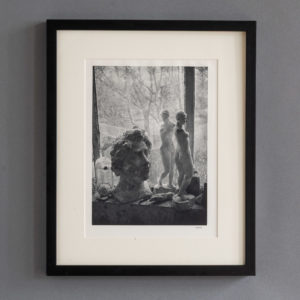
Photographs from Verve, December 1937. Brassaï
£250 eachPhotographs from Verve, December 1937. Brassaï
The Verve Review, from its very inception, was a purposefully luxurious art publication. It ran from 1937 to 1960, but for only 38 editions, due to the high degree of design and editorial work dedicated to each issue. Its editor was Stratis Eleftheriades, a Greek National who moved to Paris in the early thirties to take part in the growing Modernist movement, writing under the name of Teriade. As an art critic, patron and gallery owner he commissioned various individuals, artists, photographers and philosophers to contribute to it. Héliogravure is a process for printing photographs that was developed in the first half of the 19th century. It is a photo-mechanical process whereby a copper plate is grained and then coated with a light-sensitive gelatin tissue which had been exposed to a film positive, and then etched, resulting in a high-quality intaglio plate that can reproduce detailed continuous tones of a photograph.£250 each -
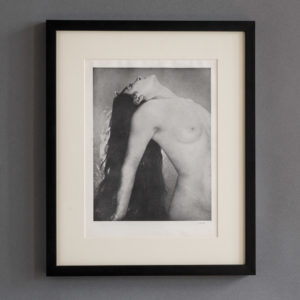
Photographs from Verve, December 1937. Man Ray
£250 eachPhotographs from Verve, December 1937. Man Ray
The Verve Review, from its very inception, was a purposefully luxurious art publication. It ran from 1937 to 1960, but for only 38 editions, due to the high degree of design and editorial work dedicated to each issue. Its editor was Stratis Eleftheriades, a Greek National who moved to Paris in the early thirties to take part in the growing Modernist movement, writing under the name of Teriade. As an art critic, patron and gallery owner he commissioned various individuals, artists, photographers and philosophers to contribute to it. Héliogravure is a process for printing photographs that was developed in the first half of the 19th century. It is a photo-mechanical process whereby a copper plate is grained and then coated with a light-sensitive gelatin tissue which had been exposed to a film positive, and then etched, resulting in a high-quality intaglio plate that can reproduce detailed continuous tones of a photograph.£250 each -
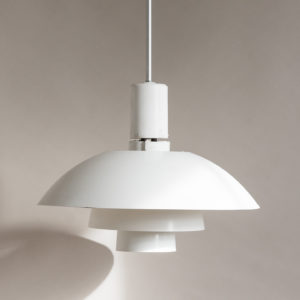
Poul Henningsen style pendant light,
£250Poul Henningsen style pendant light,
after the PH 4/3 design for Louis Poulsen originally designed 1966, removed from UCLH, Russell Square. Re-wired and PAT tested.£250 -
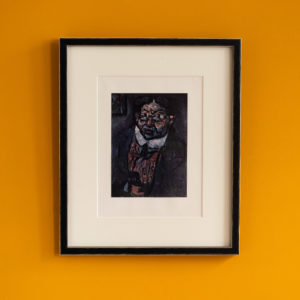
The works of George Roualt. ‘Mr. X’, 1911,
£225The works of George Roualt. ‘Mr. X’, 1911,
Although Georges Rouault a contemporary of Cubism, Expressionism and Fauvism, he never formally associated himself with any of these movements. As an independent he found his inspiration in the realities of everyday life and in religious subjects which he imbued with an authentic spirituality. Early in his career Parisian art dealer, Ambroise Vollard, bought the full contents of Georges Rouault’s studio. The artist agreed on the condition that he could finish his work at his own pace. Most of his works represented circus figures, religious subjects or landscapes.£225 -
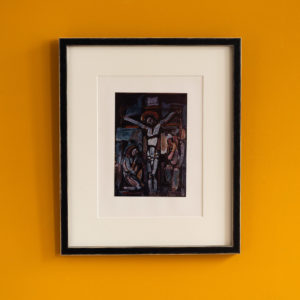
The works of George Roualt. ‘Crucifixion’, c.1918,
£225The works of George Roualt. ‘Crucifixion’, c.1918,
Although Georges Rouault a contemporary of Cubism, Expressionism and Fauvism, he never formally associated himself with any of these movements. As an independent he found his inspiration in the realities of everyday life and in religious subjects which he imbued with an authentic spirituality. Early in his career Parisian art dealer, Ambroise Vollard, bought the full contents of Georges Rouault’s studio. The artist agreed on the condition that he could finish his work at his own pace. Most of his works represented circus figures, religious subjects or landscapes.£225 -

The works of George Roualt. ‘Christ and Two Disciples’, c.1935,
£225The works of George Roualt. ‘Christ and Two Disciples’, c.1935,
Although Georges Rouault a contemporary of Cubism, Expressionism and Fauvism, he never formally associated himself with any of these movements. As an independent he found his inspiration in the realities of everyday life and in religious subjects which he imbued with an authentic spirituality. Early in his career Parisian art dealer, Ambroise Vollard, bought the full contents of Georges Rouault’s studio. The artist agreed on the condition that he could finish his work at his own pace. Most of his works represented circus figures, religious subjects or landscapes.£225 -
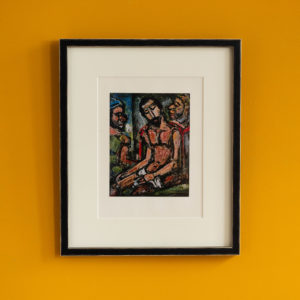
The works of George Roualt. ‘Christ Mocked by Soldiers’, 1932,
£225The works of George Roualt. ‘Christ Mocked by Soldiers’, 1932,
Although Georges Rouault a contemporary of Cubism, Expressionism and Fauvism, he never formally associated himself with any of these movements. As an independent he found his inspiration in the realities of everyday life and in religious subjects which he imbued with an authentic spirituality. Early in his career Parisian art dealer, Ambroise Vollard, bought the full contents of Georges Rouault’s studio. The artist agreed on the condition that he could finish his work at his own pace. Most of his works represented circus figures, religious subjects or landscapes.£225 -
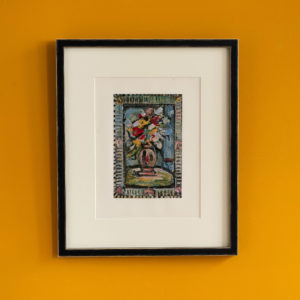
The works of George Roualt. ‘Bouquet’, c.1938,
£225The works of George Roualt. ‘Bouquet’, c.1938,
Although Georges Rouault a contemporary of Cubism, Expressionism and Fauvism, he never formally associated himself with any of these movements. As an independent he found his inspiration in the realities of everyday life and in religious subjects which he imbued with an authentic spirituality. Early in his career Parisian art dealer, Ambroise Vollard, bought the full contents of Georges Rouault’s studio. The artist agreed on the condition that he could finish his work at his own pace. Most of his works represented circus figures, religious subjects or landscapes.£225 -
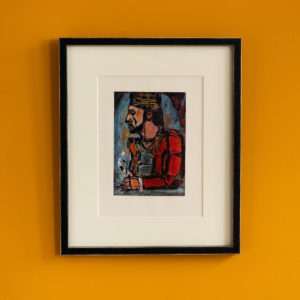
The works of George Roualt. ‘The Old King’, c.1916-36,
£225The works of George Roualt. ‘The Old King’, c.1916-36,
Although Georges Rouault a contemporary of Cubism, Expressionism and Fauvism, he never formally associated himself with any of these movements. As an independent he found his inspiration in the realities of everyday life and in religious subjects which he imbued with an authentic spirituality. Early in his career Parisian art dealer, Ambroise Vollard, bought the full contents of Georges Rouault’s studio. The artist agreed on the condition that he could finish his work at his own pace. Most of his works represented circus figures, religious subjects or landscapes.£225 -
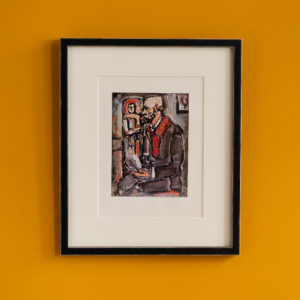
The works of George Roualt. ‘Portrait of Verlaine’, c.1938,
£225The works of George Roualt. ‘Portrait of Verlaine’, c.1938,
Although Georges Rouault a contemporary of Cubism, Expressionism and Fauvism, he never formally associated himself with any of these movements. As an independent he found his inspiration in the realities of everyday life and in religious subjects which he imbued with an authentic spirituality. Early in his career Parisian art dealer, Ambroise Vollard, bought the full contents of Georges Rouault’s studio. The artist agreed on the condition that he could finish his work at his own pace. Most of his works represented circus figures, religious subjects or landscapes.£225 -

The works of George Roualt. ‘The English Clown’, 1938-39,
£225The works of George Roualt. ‘The English Clown’, 1938-39,
Although Georges Rouault a contemporary of Cubism, Expressionism and Fauvism, he never formally associated himself with any of these movements. As an independent he found his inspiration in the realities of everyday life and in religious subjects which he imbued with an authentic spirituality. Early in his career Parisian art dealer, Ambroise Vollard, bought the full contents of Georges Rouault’s studio. The artist agreed on the condition that he could finish his work at his own pace. Most of his works represented circus figures, religious subjects or landscapes.£225 -
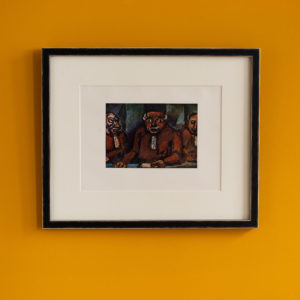
The works of George Roualt. ‘Three Judges’, 1918,
£225The works of George Roualt. ‘Three Judges’, 1918,
Although Georges Rouault a contemporary of Cubism, Expressionism and Fauvism, he never formally associated himself with any of these movements. As an independent he found his inspiration in the realities of everyday life and in religious subjects which he imbued with an authentic spirituality. Early in his career Parisian art dealer, Ambroise Vollard, bought the full contents of Georges Rouault’s studio. The artist agreed on the condition that he could finish his work at his own pace. Most of his works represented circus figures, religious subjects or landscapes.£225 -
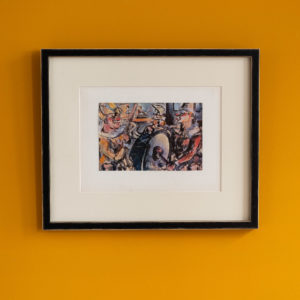
The works of George Roualt. ‘Parade’, 1907,
£225The works of George Roualt. ‘Parade’, 1907,
Although Georges Rouault a contemporary of Cubism, Expressionism and Fauvism, he never formally associated himself with any of these movements. As an independent he found his inspiration in the realities of everyday life and in religious subjects which he imbued with an authentic spirituality. Early in his career Parisian art dealer, Ambroise Vollard, bought the full contents of Georges Rouault’s studio. The artist agreed on the condition that he could finish his work at his own pace. Most of his works represented circus figures, religious subjects or landscapes.£225 -

The works of George Roualt. ‘The Humane Landscape’, 1928,
£225The works of George Roualt. ‘The Humane Landscape’, 1928,
Although Georges Rouault a contemporary of Cubism, Expressionism and Fauvism, he never formally associated himself with any of these movements. As an independent he found his inspiration in the realities of everyday life and in religious subjects which he imbued with an authentic spirituality. Early in his career Parisian art dealer, Ambroise Vollard, bought the full contents of Georges Rouault’s studio. The artist agreed on the condition that he could finish his work at his own pace. Most of his works represented circus figures, religious subjects or landscapes.£225 -
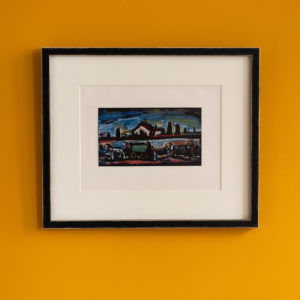
The works of George Roualt. ‘The Funeral’, 1930,
£225The works of George Roualt. ‘The Funeral’, 1930,
Although Georges Rouault a contemporary of Cubism, Expressionism and Fauvism, he never formally associated himself with any of these movements. As an independent he found his inspiration in the realities of everyday life and in religious subjects which he imbued with an authentic spirituality. Early in his career Parisian art dealer, Ambroise Vollard, bought the full contents of Georges Rouault’s studio. The artist agreed on the condition that he could finish his work at his own pace. Most of his works represented circus figures, religious subjects or landscapes.£225 -

The works of George Roualt. ‘Three Clowns’, 1917,
£225The works of George Roualt. ‘Three Clowns’, 1917,
Although Georges Rouault a contemporary of Cubism, Expressionism and Fauvism, he never formally associated himself with any of these movements. As an independent he found his inspiration in the realities of everyday life and in religious subjects which he imbued with an authentic spirituality. Early in his career Parisian art dealer, Ambroise Vollard, bought the full contents of Georges Rouault’s studio. The artist agreed on the condition that he could finish his work at his own pace. Most of his works represented circus figures, religious subjects or landscapes.£225 -
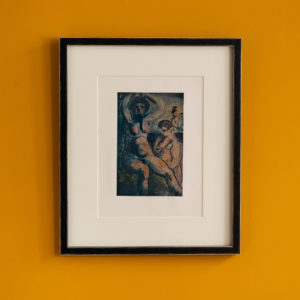
The works of George Roualt. ‘Nudes’, c.1907,
£225The works of George Roualt. ‘Nudes’, c.1907,
Although Georges Rouault a contemporary of Cubism, Expressionism and Fauvism, he never formally associated himself with any of these movements. As an independent he found his inspiration in the realities of everyday life and in religious subjects which he imbued with an authentic spirituality. Early in his career Parisian art dealer, Ambroise Vollard, bought the full contents of Georges Rouault’s studio. The artist agreed on the condition that he could finish his work at his own pace. Most of his works represented circus figures, religious subjects or landscapes.£225 -
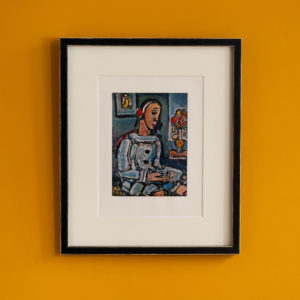
The works of George Roualt. ‘The Wise Pierrot, 1945’,
£225The works of George Roualt. ‘The Wise Pierrot, 1945’,
Although Georges Rouault a contemporary of Cubism, Expressionism and Fauvism, he never formally associated himself with any of these movements. As an independent he found his inspiration in the realities of everyday life and in religious subjects which he imbued with an authentic spirituality. Early in his career Parisian art dealer, Ambroise Vollard, bought the full contents of Georges Rouault’s studio. The artist agreed on the condition that he could finish his work at his own pace. Most of his works represented circus figures, religious subjects or landscapes.£225 -
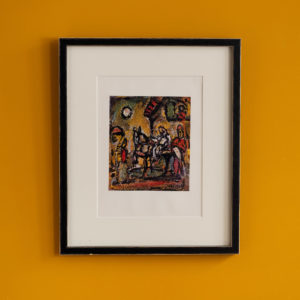
The works of George Roualt. ‘The Flight into Egypt, 1948’,
£225The works of George Roualt. ‘The Flight into Egypt, 1948’,
Although Georges Rouault a contemporary of Cubism, Expressionism and Fauvism, he never formally associated himself with any of these movements. As an independent he found his inspiration in the realities of everyday life and in religious subjects which he imbued with an authentic spirituality. Early in his career Parisian art dealer, Ambroise Vollard, bought the full contents of Georges Rouault’s studio. The artist agreed on the condition that he could finish his work at his own pace. Most of his works represented circus figures, religious subjects or landscapes.£225 -
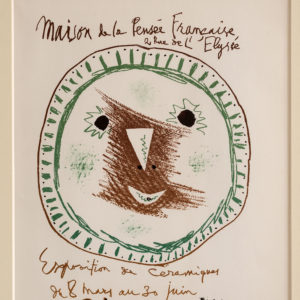
The Posters of Picasso
£195 eachThe Posters of Picasso
Original lithographs showing the output of Picasso for his exhibition posters. Mounted and framed black.£195 each -
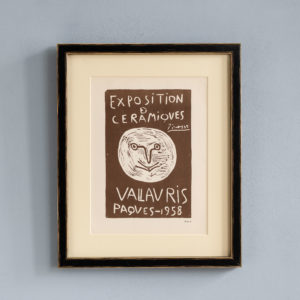
The Posters of Picasso
£195 eachThe Posters of Picasso
Original lithographs showing the output of Picasso for his exhibition posters. Mounted and framed black.£195 each -
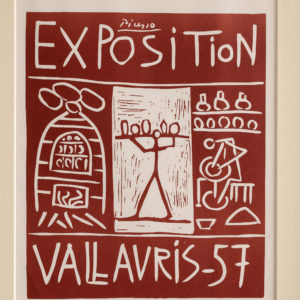
The Posters of Picasso
£195 eachThe Posters of Picasso
Original lithographs showing the output of Picasso for his exhibition posters. Mounted and framed black.£195 each -
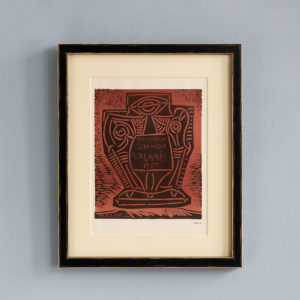
The Posters of Picasso
£195 eachThe Posters of Picasso
Original lithographs showing the output of Picasso for his exhibition posters. Mounted and framed black.£195 each -
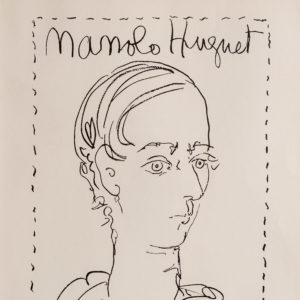
The Posters of Picasso
£195 eachThe Posters of Picasso
Original lithographs showing the output of Picasso for his exhibition posters. Mounted and framed black.£195 each -
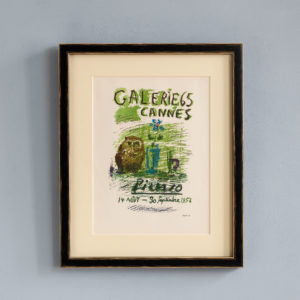
The Posters of Picasso
£195 eachThe Posters of Picasso
Original lithographs showing the output of Picasso for his exhibition posters. Mounted and framed black.£195 each -
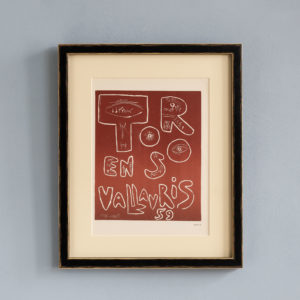
The Posters of Picasso
£195 eachThe Posters of Picasso
Original lithographs showing the output of Picasso for his exhibition posters. Mounted and framed black.£195 each -
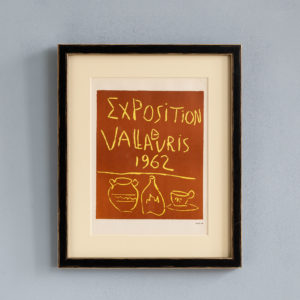
The Posters of Picasso
£195 eachThe Posters of Picasso
Original lithographs showing the output of Picasso for his exhibition posters. Mounted and framed black.£195 each -
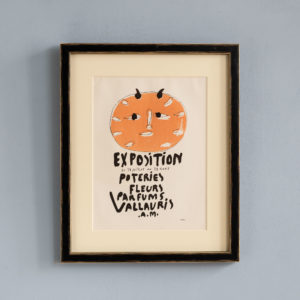
The Posters of Picasso
£195 eachThe Posters of Picasso
Original lithographs showing the output of Picasso for his exhibition posters. Mounted and framed black.£195 each -
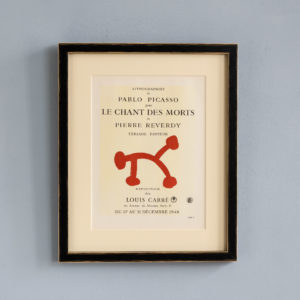
The Posters of Picasso
£195 eachThe Posters of Picasso
Original lithographs showing the output of Picasso for his exhibition posters. Mounted and framed black.£195 each -
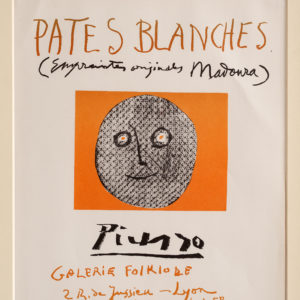
The Posters of Picasso
£195 eachThe Posters of Picasso
Original lithographs showing the output of Picasso for his exhibition posters. Mounted and framed black.£195 each -
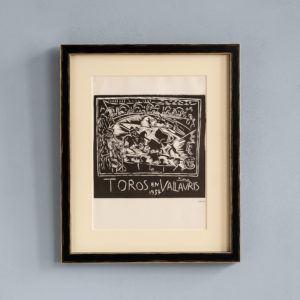
The Posters of Picasso
£195 eachThe Posters of Picasso
Original lithographs showing the output of Picasso for his exhibition posters. Mounted and framed black.£195 each -
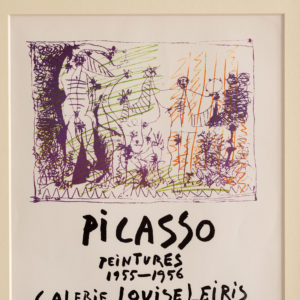
The Posters of Picasso
£195 eachThe Posters of Picasso
Original lithographs showing the output of Picasso for his exhibition posters. Mounted and framed black.£195 each -
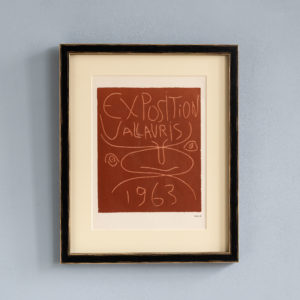
The Posters of Picasso
£195 eachThe Posters of Picasso
Original lithographs showing the output of Picasso for his exhibition posters. Mounted and framed black.£195 each -
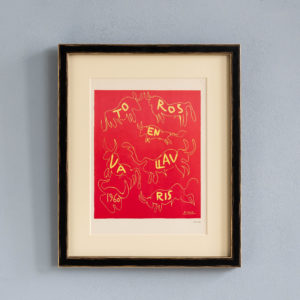
The Posters of Picasso
£195 eachThe Posters of Picasso
Original lithographs showing the output of Picasso for his exhibition posters. Mounted and framed black.£195 each -
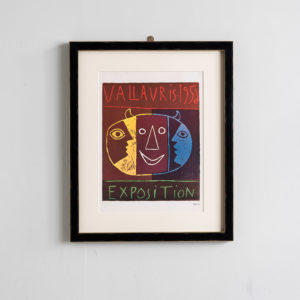
The Posters of Picasso,
£195 eachThe Posters of Picasso,
Original lithographs showing the output of Picasso for his exhibition posters. Mounted and framed black.£195 each -
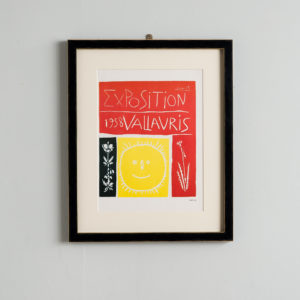
The Posters of Picasso,
£195 eachThe Posters of Picasso,
Original lithographs showing the output of Picasso for his exhibition posters. Mounted and framed black.£195 each -
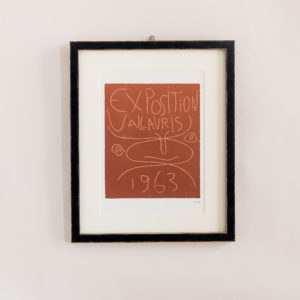
The Posters of Picasso
£195 eachThe Posters of Picasso
Original lithographs showing the output of Picasso for his exhibition posters. Mounted and framed black.£195 each -
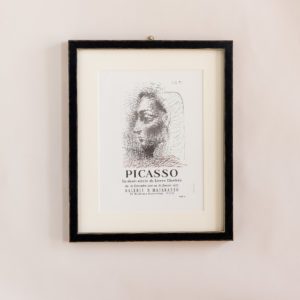
The Posters of Picasso
£195 eachThe Posters of Picasso
Original lithographs showing the output of Picasso for his exhibition posters. Mounted and framed black.£195 each -
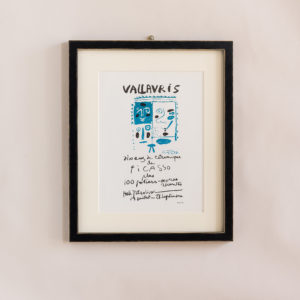
The Posters of Picasso
£195 eachThe Posters of Picasso
Original lithographs showing the output of Picasso for his exhibition posters. Mounted and framed black.£195 each -
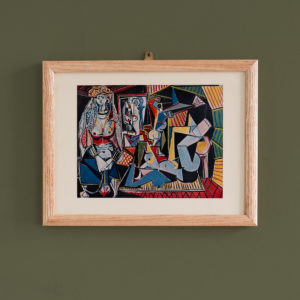
Picasso lithographs, published 1959, Women of Algiers,
£120Picasso lithographs, published 1959, Women of Algiers,
In 1959 when these prints were published, the 78 year old Picasso was in fashion as a gifted exhibitionist living his art in the public eye.£120 -
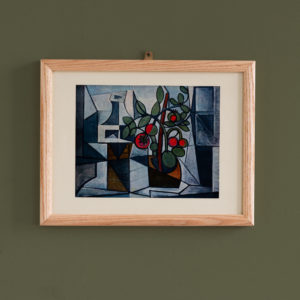
Picasso lithographs, published 1959, Tomato Plant & Decanter,
£120Picasso lithographs, published 1959, Tomato Plant & Decanter,
In 1959 when these prints were published, the 78 year old Picasso was in fashion as a gifted exhibitionist living his art in the public eye.£120 -
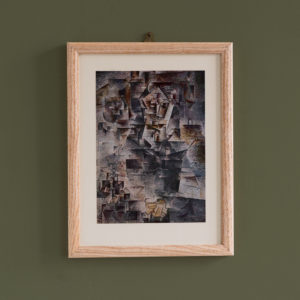
Picasso lithographs, published 1959, Daniel-Henry Kahnweiler,
£120Picasso lithographs, published 1959, Daniel-Henry Kahnweiler,
In 1959 when these prints were published, the 78 year old Picasso was in fashion as a gifted exhibitionist living his art in the public eye.£120 -
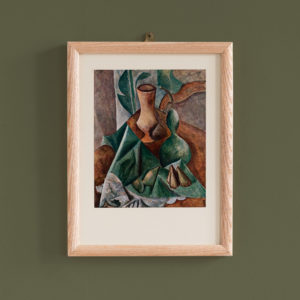
Picasso lithographs, published 1959, Still Life with Gourd,
£120Picasso lithographs, published 1959, Still Life with Gourd,
In 1959 when these prints were published, the 78 year old Picasso was in fashion as a gifted exhibitionist living his art in the public eye.£120 -
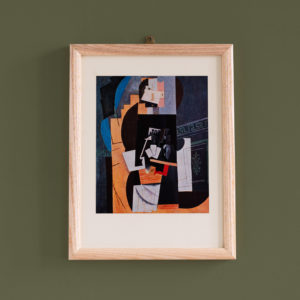
Picasso lithographs, published 1959, Card Player,
£120Picasso lithographs, published 1959, Card Player,
In 1959 when these prints were published, the 78 year old Picasso was in fashion as a gifted exhibitionist living his art in the public eye.£120 -
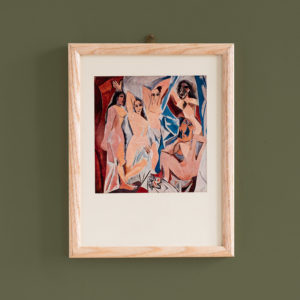
Picasso lithographs, published 1959, Les Desmoiselles D’Avignon,
£120Picasso lithographs, published 1959, Les Desmoiselles D’Avignon,
In 1959 when these prints were published, the 78 year old Picasso was in fashion as a gifted exhibitionist living his art in the public eye.£120 -
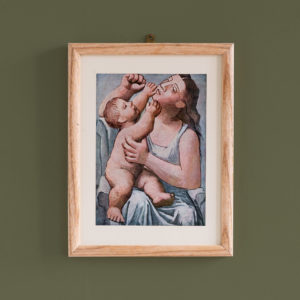
Picasso lithographs, published 1959, Mother & Child,
£120Picasso lithographs, published 1959, Mother & Child,
In 1959 when these prints were published, the 78 year old Picasso was in fashion as a gifted exhibitionist living his art in the public eye.£120 -
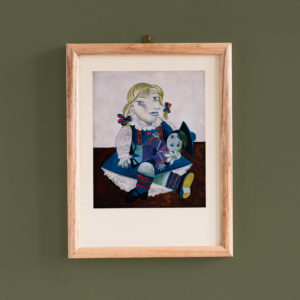
Picasso lithographs, published 1959, Maia with Sailor Doll,
£120Picasso lithographs, published 1959, Maia with Sailor Doll,
In 1959 when these prints were published, the 78 year old Picasso was in fashion as a gifted exhibitionist living his art in the public eye.£120 -
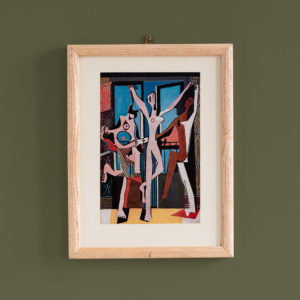
Picasso lithographs, published 1959, Three Dancers,
£120Picasso lithographs, published 1959, Three Dancers,
In 1959 when these prints were published, the 78 year old Picasso was in fashion as a gifted exhibitionist living his art in the public eye.£120 -
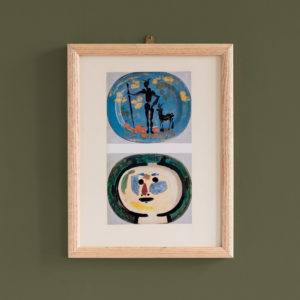
Picasso lithographs, published 1959, Faun & Goat,
£120Picasso lithographs, published 1959, Faun & Goat,
In 1959 when these prints were published, the 78 year old Picasso was in fashion as a gifted exhibitionist living his art in the public eye.£120
Featured Items
-
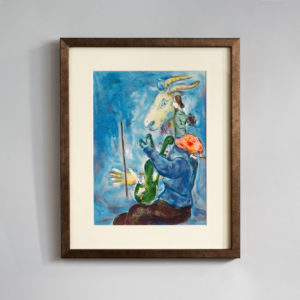
Printemps by Marc Chagall, Verve Vol. 1 / No. 3.
£800Printemps by Marc Chagall, Verve Vol. 1 / No. 3.
The Verve Review was a purposefully luxurious. It ran from 1937 to 1960, but with only 38 editions available, due to the high degree of design and editorial work dedicated to each issue. Each edition contained unique lithographic prints, commissioned by the editor, and each cover a double-page lithograph elaborated by one of the artists contained within. It was the brainchild of its editor Stratis Eleftheriades, a Greek National who moved to Paris in the early thirties to take part in the growing Modernist movement, writing under the name of Teriade.£800 -
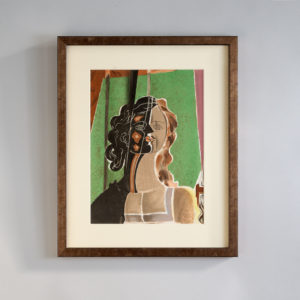
Figure by Georges Braque, Verve Vol 2 / No. 5-6.
£800Figure by Georges Braque, Verve Vol 2 / No. 5-6.
The Verve Review was a purposefully luxurious. It ran from 1937 to 1960, but with only 38 editions available, due to the high degree of design and editorial work dedicated to each issue. Each edition contained unique lithographic prints, commissioned by the editor, and each cover a double-page lithograph elaborated by one of the artists contained within. It was the brainchild of its editor Stratis Eleftheriades, a Greek National who moved to Paris in the early thirties to take part in the growing Modernist movement, writing under the name of Teriade.£800 -
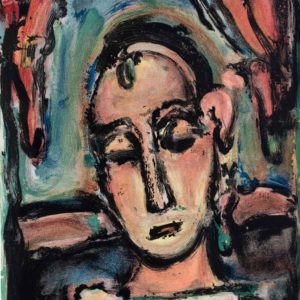
Head of a Girl by George Rouault, Verve Vol 2 / No. 5-6.
£800Head of a Girl by George Rouault, Verve Vol 2 / No. 5-6.
The Verve Review was a purposefully luxurious. It ran from 1937 to 1960, but with only 38 editions available, due to the high degree of design and editorial work dedicated to each issue. Each edition contained unique lithographic prints, commissioned by the editor, and each cover a double-page lithograph elaborated by one of the artists contained within. It was the brainchild of its editor Stratis Eleftheriades, a Greek National who moved to Paris in the early thirties to take part in the growing Modernist movement, writing under the name of Teriade.£800 -
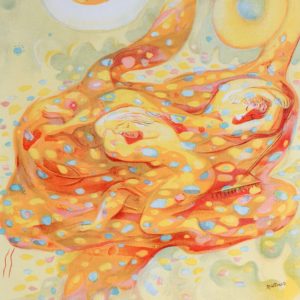
Autumn by Abraham Rattner, Verve Vol. 1 / No. 3.
£600Autumn by Abraham Rattner, Verve Vol. 1 / No. 3.
The Verve Review was a purposefully luxurious. It ran from 1937 to 1960, but with only 38 editions available, due to the high degree of design and editorial work dedicated to each issue. Each edition contained unique lithographic prints, commissioned by the editor, and each cover a double-page lithograph elaborated by one of the artists contained within. It was the brainchild of its editor Stratis Eleftheriades, a Greek National who moved to Paris in the early thirties to take part in the growing Modernist movement, writing under the name of Teriade.£600

